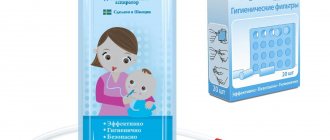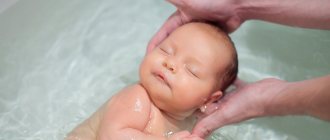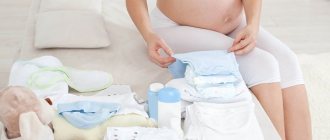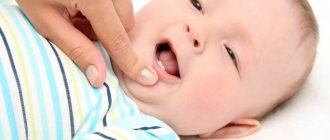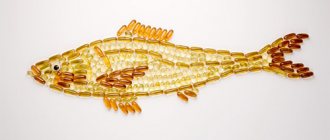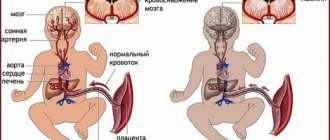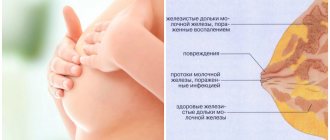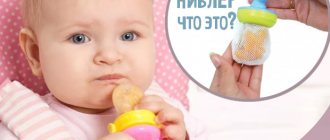What is
An ergo-backpack for newborns is presented in the form of a special carrier designed to move one of the parents along with the infant . The product combines the beneficial qualities of a sling and a kangaroo.
When used correctly, the accessory is absolutely safe for the youngest children and their mothers. Allows parents to be more mobile and continue to lead an active lifestyle with a new family member.
Design
A physiological backpack consists of the following fundamental parts:
- The most important element is a wide belt with a rigid structure, with its help the main load is distributed on the adult’s hips.
- Backpack straps are represented by wide straps made of thick fabric, often with a foam layer inside for a softer and more comfortable wearing. They are attached in two ways - parallel to each other or fastened in the form of crossed straps on the back.
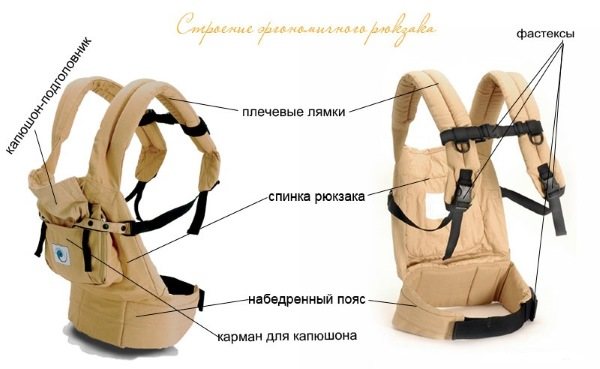
- The back of the carrier must be soft without hard inserts, which is important for proper fit in the backpack.
- A hood to protect the baby from all kinds of weather conditions or as a fixing element for the head while the baby sleeps.
Features of the device
In such a carrier, the baby’s weight is distributed evenly, thereby eliminating excessive stress on the newborn’s body and the mother’s spine.
The most important feature is the anatomically correct position of the child according to the M-type - legs bent at the knees, spread to the sides, the position of the pelvis below the level of the legs. It is in this position that the safest movement for the child in the carrier is ensured.
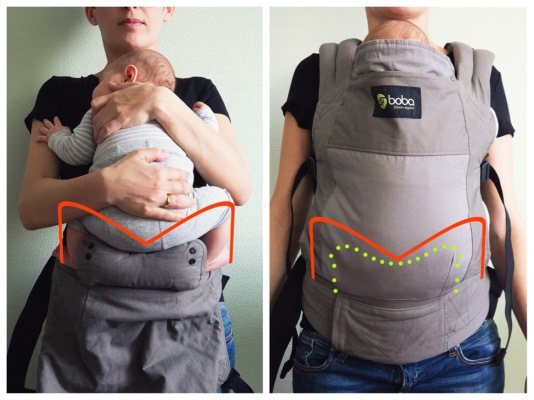
Ergonomic backpacks are equipped with a variety of additional functions and devices, which together help adapt to the individual characteristics of each baby. The soft back made of dense material evenly supports the child in the desired position, which is easily adjusted and allows you to feed the baby without removing it from the backpack.
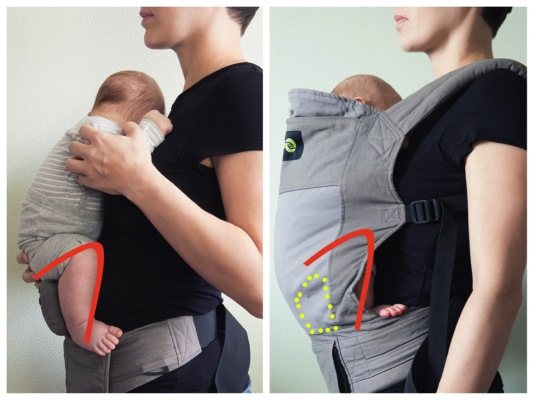
The design is thought out to the smallest detail, ensuring the safety and comfort of the child in any conditions. Adults can safely go shopping, go for a walk, or do household chores with their hands free.
At what age can you carry a child in an ergo-backpack?
There are no national standards defining the age at which children can begin using baby carriers. Manufacturers indicate age categories on their products based on general guidelines, and design inserts and other supporting parts to please the youngest customers.
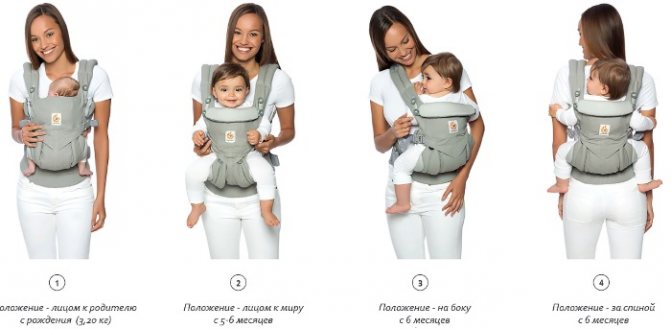
The ideal time to sit in an ergonomic backpack is considered to be the period when the baby can sit independently for some time without the support and support of an adult. For some it is 4 months, in other cases it may be 9 months. Sitting down earlier is acceptable for a short time when mom needs free hands or rest.
How to independently determine whether a child can be carried in a carrier
You can determine whether a baby is ready to travel in a backpack by the following signs:
- a short stay in a backpack is allowed if the newborn holds his head confidently;
- can lift the upper body when lying on the stomach;
- The baby's weight reached 7-8 kg.
For larger children, it is easier to choose the first device, since there are rarely models suitable for the smallest ones.
Varieties by age characteristics
There is a division of ergo-backpacks into types according to the age of the baby:
- For newborns up to 1.5 months. – specially designed to place babies in a horizontal position or in a fetal position, designed for short movements. It is better for such young children to sleep most of the time on a hard surface to properly form the curves of the spine.
- Age category for babies up to 4 months. – differ in design with a tighter fit, allowing you to carry the baby as close as possible to the mother, evenly supporting the body. Such models are sometimes equipped with additional fastenings in the middle to reduce the load.
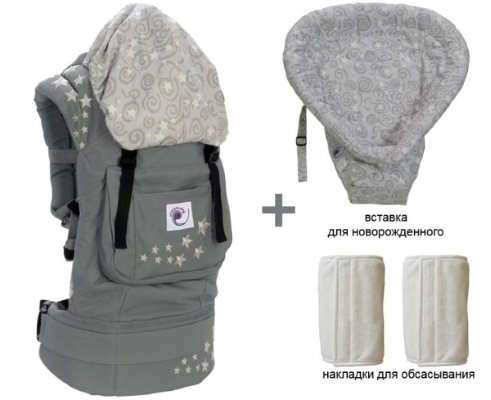
- Carriers for children from 4 months. and before reaching 3 years of age - the most common option. Manufacturers often equip this type of backpack with an insert for newborns, providing versatility to the device.
Description of types of ergo backpacks
Sling for newborns from 0 to 6 months
There are types of ergonomic backpacks for children, depending on age:
- From the moment of birth to one and a half months. An ergo backpack for newborns from 0 to 1.5 months is best suited for carrying newborn babies. If in a regular model the baby is fixed in a sitting position, then in ergo backpacks for newborns - in a lying fetal position.
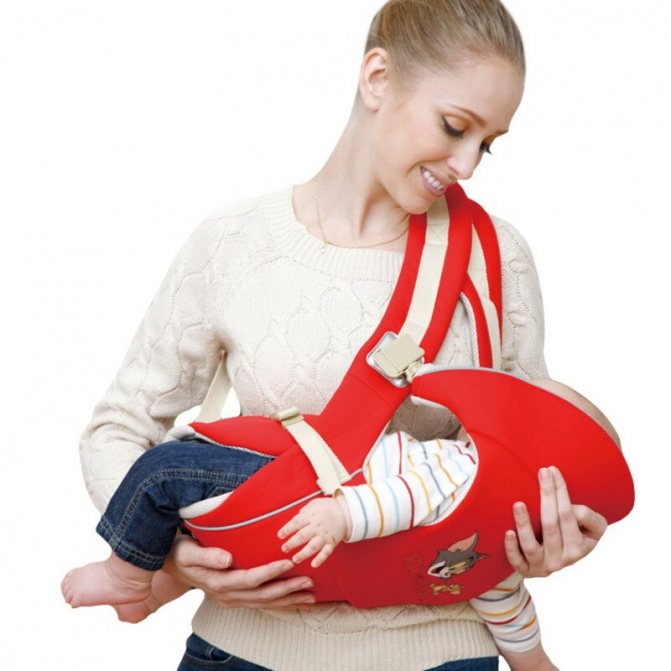
Backpack for children from 0 to 1.5 months.
Note! After a month and a half, you need to buy another backpack, because the baby will be much more comfortable in it.
- From 1.5 to 4 months. The child is in a sitting position while walking. Since at this age it is still relatively difficult for a baby to sit, he is secured with special rigid belts.
- Up to 3 years. Such ergo backpacks are most represented on the markets. At this age, the child can already sit independently; no special devices are needed for his comfort.
How to use
The ergo-backpack for newborns is packaged complete with instructions and operating rules, which must be strictly adhered to.
Brief instructions for using the ergo-backpack:
- The first thing to put on is a carrying belt under the waist. The fastening must ensure reliable and tight fixation of the ergo-backpack to the mother.
- All models, manufactured according to European quality standards, have special semi-automatic fastex fasteners, with the help of which the belts are conveniently tightened in the required position.
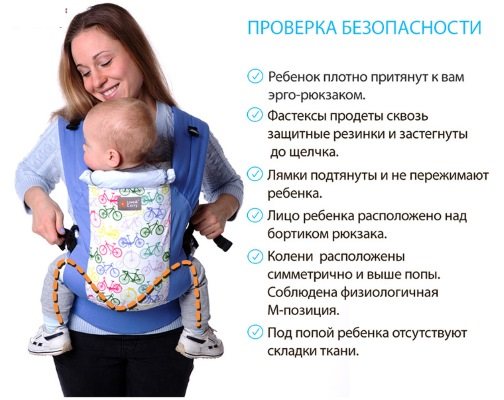
- Fastex locks are also used to adjust the straps - ideal for quickly adjusting the carrier to the parameters of an adult and a child.
- Then you can place the child, observing the natural position of the body in accordance with age. If necessary, use a newborn insert.
Options for placing a child in an ergo-backpack
Most ergo carriers provide for use in 3 positions:
- Face to face – this arrangement provides the best contact with the mother; when carried in this way, children feel calmer. Pediatricians and consultants in the field of portable devices recommend this position, which involves fewer irritating factors for the fragile nervous system.
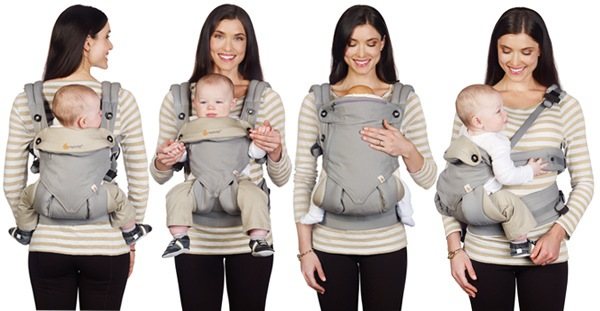
- Forward-facing – suitable for inquisitive children who quickly become bored and constantly need movement and familiarity with the world around them. It is not recommended to wear it in this position for too long; it can cause anxiety and poor sleep in the baby.
- On the back – it is put on like a regular backpack on the back. Suitable for rare cases, it is recommended to use only when necessary, since it is not possible to constantly monitor the child’s condition.
Rating
| Nomination | Name | Prices, rub |
| The best ergo backpack | Baby Bjorn One | from 10900 to 18272 |
| Best backpack/kangaroo bag | Baby Bjorn One | from 10900 to 18272 |
| The best backpack/bag - kangaroo facing mom | Manduca Baby Carrier | from 7990 to 10450 |
| The best backpack/bag - kangaroo face from mom | Baby Bjorn One | from 10900 to 18272 |
| The best inexpensive (cheap) backpack/kangaroo bag | Miracle child BabyActive Simple | from 1990 to 2864 |
The best ergo backpack
Baby Bjorn One
Advantages
- Position facing mother and back to mother
- Comfort for the parent
- Easy to fold
- Weight
Flaws
- Side clasps are not comfortable
Best backpack/kangaroo bag
Baby Bjorn One
Advantages
- Position facing mother and back to mother
- Comfort for the parent
- Easy to fold
- Weight
Flaws
- Side clasps are not comfortable
The best backpack/bag - kangaroo facing mom
Manduca Baby Carrier
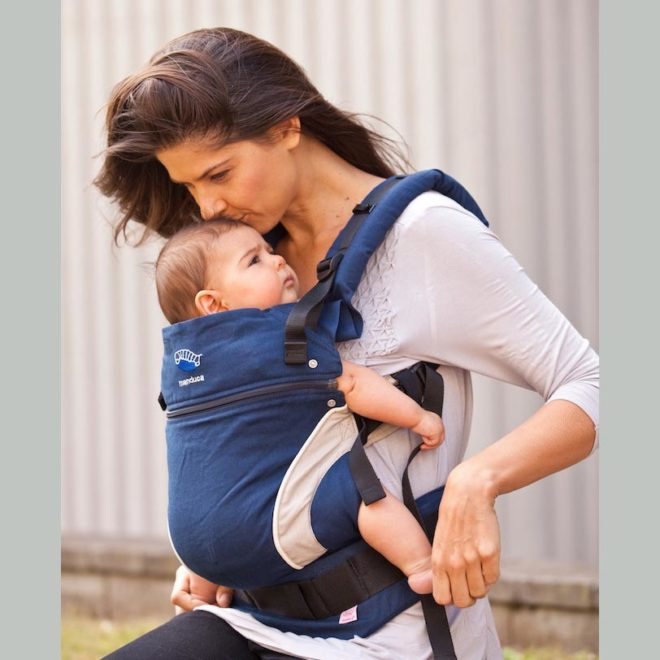
Advantages
- Design
- Mom's lumbar support
- Physiological for the child
- Easy to wash
The best backpack/bag - kangaroo face from mom
Baby Bjorn One
Advantages
- Position facing mother and back to mother
- Comfort for the parent
- Easy to fold
- Weight
Flaws
- Side clasps are not comfortable
The best inexpensive (cheap) backpack/kangaroo bag
Miracle child BabyActive Simple
Advantages
- Quality of materials
- Convenience for mom
- There is a lying position
Flaws
- The child sweats in hot weather
How to choose an ergo backpack
When choosing an ergo-carrying device, you should take into account many important features for the comfort of the baby and his parents.
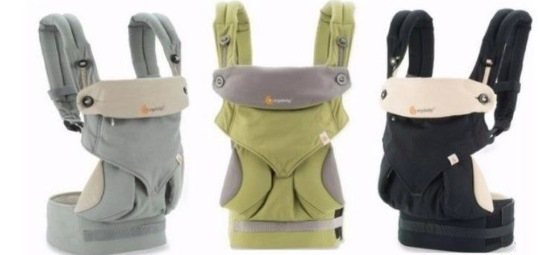
A few tips to help you choose the right option:
- Even the most popular models may not take into account all the wishes of a particular family, so it is always recommended to try them on before purchasing. You can experiment with adjusting the straps to make it comfortable for both mom and dad.
- Check the quality of the material; it is better to give preference to the natural composition of fabrics. When trying on, it is easier to evaluate the convenience of the design and the correct fit with sufficient density.
- The carrier should be easy to put on, but have reliable fastenings and locks that firmly secure the backpack on the mother’s belt.
- Having a special insert for babies included in the kit is an advantage. This insert is designed to safely accommodate the youngest children from birth to 4 months. Provides uniform support in the natural position of the body in horizontal and vertical versions.
- The back design should be wide and not narrow at the bottom. This shape is necessary for the correct position of the legs in the backpack; free hanging of the legs down is unacceptable.
- The material of the backrest should provide loose, but at the same time strong support for the back in the C-position. Hard inserts will prevent the formation of the natural curves of the spine.
- It is recommended to choose a more practical design for the accessory. Additional decorations are not as important as wide straps that will not cut into your shoulders during use.
Options for carrying a child in an ergo-backpack: photos and explanations
You can only carry a child vertically in an ergo-backpack:
- facing mom;
- on the side;
- on the back.
If parents decide to carry the child with his back to himself, it should be taken into account that in this position the entire load falls on his spine. This is not the way to place a baby who cannot sit independently.
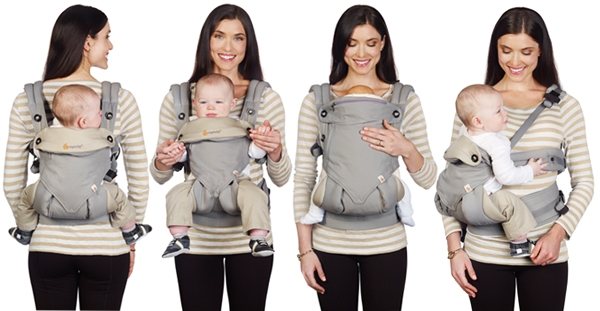
In an ergo-backpack, a child can be carried in 4 different positions
The child should sit symmetrically in the ergo-backpack, with his knees at the same level. If this is not the case, you need to readjust the length of the straps.
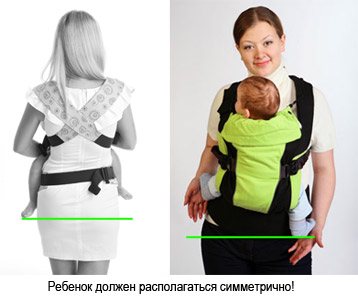
In a Vergo backpack, the child should be positioned symmetrically
Front position facing mother: instructions
The most common position is facing the mother. Women who are just starting to use an ergo-backpack first master this position, and later practice others. In order for your baby to sit correctly in the ergo, you need to consistently follow the recommendations for putting on the backpack.
- Fasten the backpack on your belt just below your waist using fastex fasteners.
Some models of ergo-backpacks have a safety elastic band to prevent the clasps from unfastening spontaneously. Before fastening the belt, you need to thread the fastex through it.
- Take your baby and place his face against your chest.
- Hold the child with one hand, and with the other, lift the back of the backpack and throw the straps over your shoulders.
- One hand still supports the baby, and the other is behind the back. Grab the strap on the opposite shoulder with it and pull it down.
- Place the strap to the side and fasten it to the fastex on the side of the backpack.
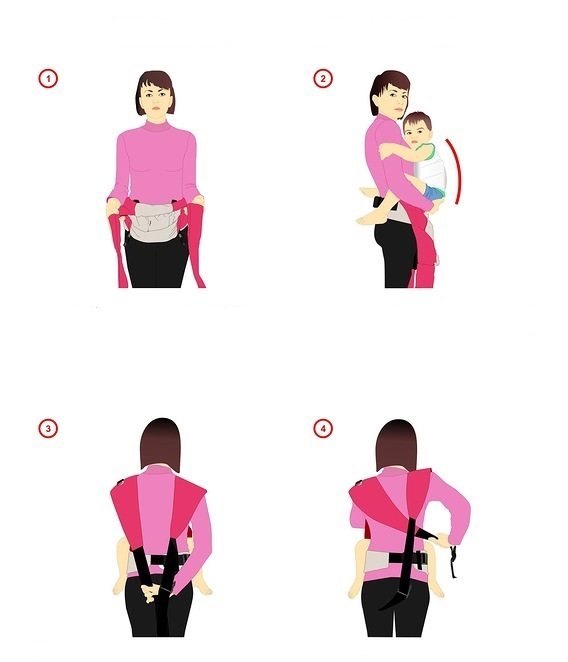
We put the backpack in a position facing the mother
- Do the same with the second strap.
- Straighten the straps well on your back, making sure they are not twisted. Adjust the length of the backpack: the baby should be pressed tightly against the mother’s body.
If you put on the ergo-backpack correctly, then the crosshairs of the straps are located slightly below the shoulder blades.
- At the final stage, straighten the back of the backpack, pulling it up so that there are no folds and the child sits comfortably, like in a hammock. The baby's legs are positioned in an M shape: the knees are higher than the buttocks.
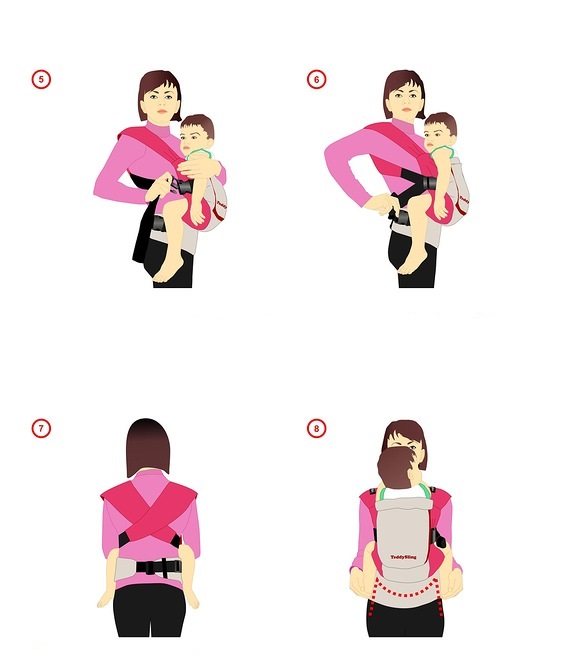
How to properly carry your baby in an upright position
If you want to carry your baby with his back to his mother, wear a backpack in the same way.
Position facing mother in an ergo-backpack - video
How to use the side carry device
It is convenient to carry a child in a backpack on its side, but it is worth noting that the back support in this position is insufficient.
- Put on the belt of the backpack so that the back is located to the side.
- Take one strap, throw it over your shoulder, and then fasten it to the fastex on the opposite side.
- Take the baby and place him in the ergo-backpack. His legs should be wide apart.
- Tighten the strap, adjusting the length so that the baby is snug against the mother's body.
- Take the second strap with your hand and pass it behind your back; it does not need to be thrown over your shoulder.
- Fasten the strap to the fastex on the opposite side.
Instructions for putting on an ergo-backpack for a position on the hip
How to seat a child behind your back
Another popular position is behind the back. It is most often practiced by experienced mothers who have long mastered the sling and ergo-backpack. But it’s never too late to learn, so every woman can try to sit and carry a child in this way.
- Fasten the backpack straps with fasteners.
- Put on and fasten the backpack at the waist so that the base is behind your back.
- With one hand, take one strap and place it over your shoulder.
- Squat down and place the child in the backpack, putting one of the baby’s legs under the strap that is draped over the mother’s shoulder. If there is a dad or grandma nearby, you can use their help to place the baby in the carrier.
- While holding your child, place the second strap on your shoulder.
- Secure the backpack in this position. To do this, you need to thread the connecting slings under the straps, bring them forward and fasten them above the chest.
- Adjust the length of the backpack, pulling your baby tightly towards you. To ensure that the child sits correctly (knees higher than the buttocks), slightly tighten the back of the device.
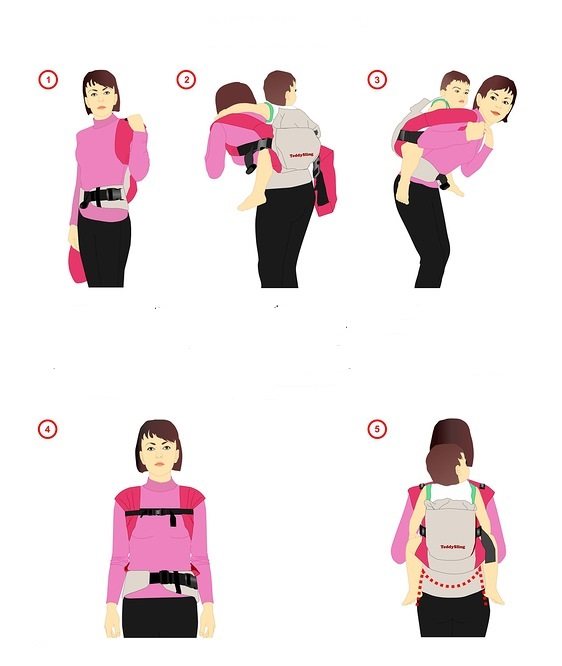
Experienced mothers practice carrying a child in a backward position.
We carry the child on the side and behind the back in an ergo-backpack - video
Ergo backpack in the cold season
Ergo backpacks are also worn in winter. They can be worn over outerwear, but this is inconvenient for both mother and baby. There are special sling jackets under which the baby is placed in a carrier. They are designed in such a way that they fasten freely, and the child fits comfortably inside.
Ergo-backpack under a sling jacket - photo gallery
First you need to put on an ergo-backpack, and then a sling jacket
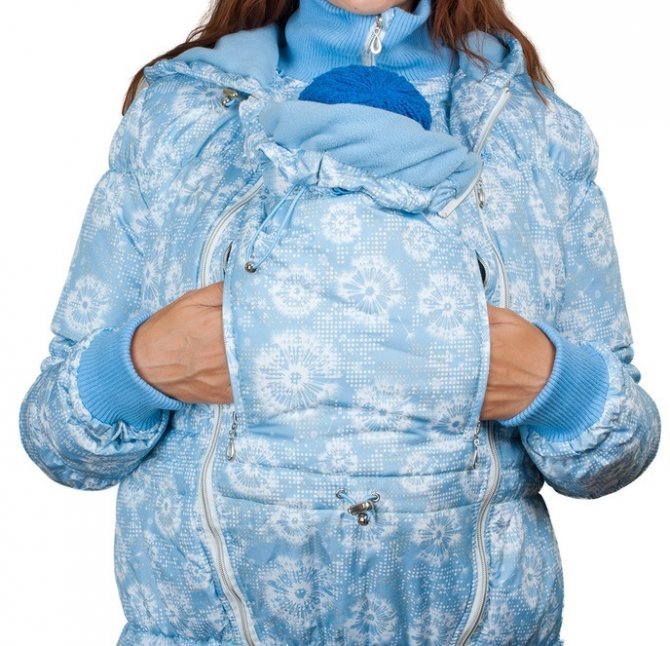
Some models have a special pocket so you can adjust your baby
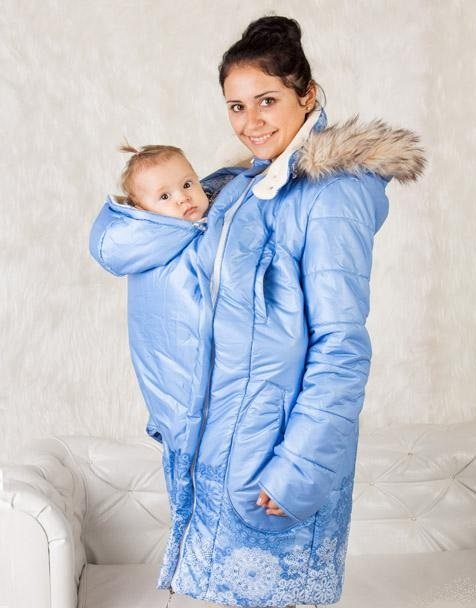
A special hood protects the child from wind and bad weather
How to properly wear an ergo backpack in winter with a babywearing jacket - video
Pros and cons of the device
An ergo-backpack for newborns has a considerable number of positive properties and reviews, but there are also negative aspects that accompany carrying a child in this product.
The main advantages and disadvantages are collected in the table:
| pros | Minuses |
| There are no restrictions on the time the child can spend in the carrier. The child can be carried all day long without harm to health or negative consequences. | Long-term use requires rest for the back, especially as the child's weight increases. |
| The negative impact on the spine and hip joints of the baby is excluded. | Placing a child in the wrong position is fraught with additional stress on an unprepared little body. |
| The design of the carrier ensures that the weight of the newborn is evenly distributed on the shoulders, back and hips of the adult. | Using a carrier that is not age-appropriate poses potential harm to the health of the newborn. |
| Ease of use allows you to quickly remove and put on the device in any circumstances. | |
| Thanks to high-quality materials, the backpack lasts a long time and does not lose its main properties. | |
| The presence of a head support option and a protective hood makes walking more comfortable. | |
| A variety of design solutions and a rich color palette can satisfy the tastes of the most demanding parents. |
Features of application
Features of using backpacks and kangaroo bags:
- Used until the child reaches 12 kg in weight.
- You should not start wearing backpacks until the child begins to hold his head up.
- Kangaroo carriers with stirrups should not be used for children under 10 months.
- You cannot carry a child in such carriers for more than 1.5-2 hours a day.
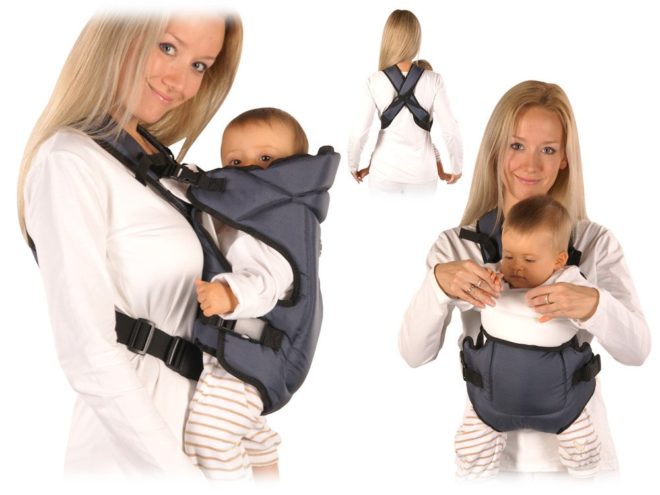
Doctors' opinions on ergonomic backpacks
Reviews from experts about wearing children in carriers are mostly positive. The main condition on which doctors focus is the compliance of the device with the parameters of the weight and age of the newborn. It is also important not to harm the child, for which you should strictly adhere to the instructions and rules for proper placement.
From the point of view of benefits for parents, the use of backpacks is also considered justified. Comfortable carrying relieves stress on the hands and prevents lower back pain.
According to psychologists, constant contact with the mother has a beneficial effect on the child’s condition, improves his mood, and promotes speech development. In carriers, newborns feel more protected and cry less often.
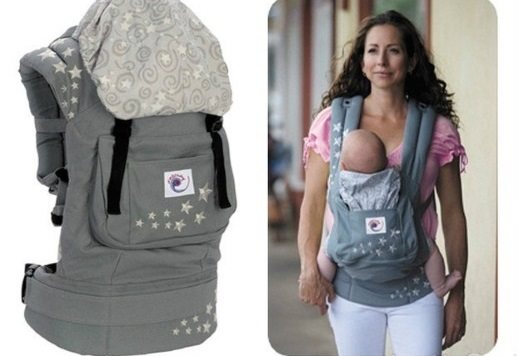
Demonstration of wearing an ergo backpack for newborns up to 4 months
A positive effect is also noted for the mother. The carrier makes it easy to move with your child in places where a stroller cannot go. You can always feed your baby without removing it from the backpack. Mom feels calmer when the baby is nearby and is happy with everything.
Distinctive characteristics of an ergo-backpack and a kangaroo
Describing both types of carriers, experts agree that ergonomic backpacks are safer for newborns. Kangaroos are suitable for babies who already sit confidently, have a stronger spine and a muscular corset that allows them to move with a firm back.
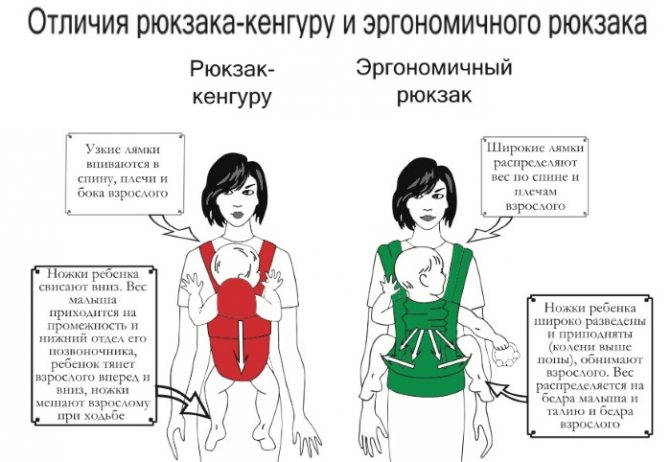

It is necessary to pay attention to the position of the baby’s body in a kangaroo; not all models provide physiological positioning, as in a sling-carrying. As a result, the baby carrier puts more pressure on the baby's perineum.
An ergo-backpack for newborns is more comfortable not only for babies, but also for their parents. Thanks to the wide straps and belt, there is no increased stress on the shoulders and back area.
The fixation of the legs in ergonomic accessories is also conveniently organized, unlike kangaroos, in which the legs dangle freely and interfere with movement.
For a long stay in a carrier, an ergo-backpack is definitely the best option; you will need to take the baby out of the kangaroo frequently to relieve the load on the spine and allow the baby to move for a couple of minutes.
Operating principle and design of the ergo backpack
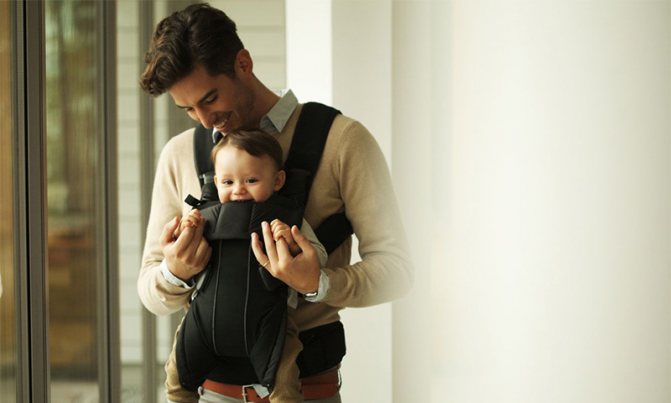
An ergonomic backpack really doesn’t differ much from a “kangaroo” in appearance.
Here you can see the same elements of a baby carrier:
1. A wide and soft back that holds the child;
2. Shoulder straps – parallel or fastened crosswise.
3. Additional belt.
This is where the similarities end and the differences begin, dictated by the real needs of children and their parents:
1. The back of the ergo backpack is much softer and has a kind of hammock in the lower part, in which the child sits, legs spread wide. This is a more natural position for the baby - when the knees are higher than the pelvis.
2. The straps and belt here are very wide - they evenly distribute the load on mom or dad’s body.
3. Removable shock absorbers - essentially these are extensions of the lower backrest. Their task is to provide support for the baby’s hips all the way to the knees. This will reduce the load on the weak spine, and at the same time help avoid squeezing the legs.
4. Many models have a hood to protect the child from rain, wind or scorching sun.
This backpack design allows you to solve two problems at once:
1. The baby takes the most physiological position and sits comfortably in a “frog” position - with his legs spread wide and his knees raised above his butt. This is exactly how you should hold your baby to prevent dysplasia.
2. The parent does not experience too much stress on the spine, since the child’s weight is transferred to the shoulders, back, and lower back with the hips. No one bothers anyone - both are very comfortable.
Sling or ergo-backpack: which is better for a newborn
Both devices have a number of undeniable advantages for use by infants from the first days of life. The sling maintains a more physiological position for the baby, almost like in the mother’s arms. This method of carrying provides the most relaxed and comfortable conditions for the newborn.
An ergo backpack with inserts also copes well with the task. The argument in favor of backpacks is the quick attachment and removal of the device, unlike a sling. Therefore, when choosing, it is worth considering how long it will take to carry it.
If you need to frequently remove and put on an accessory, it is more convenient to use an ergo-backpack; for long walks, it is better to use a sling.
Video: which is better: a sling or an ergo-backpack:
Recommendations for use in the cold season
Ergo backpacks are designed to be worn in all seasons. You should select clothes for your child taking into account weather conditions, paying special attention to the legs. Contact with the mother and the carrier provides warmth to the baby, so a well-insulated onesie should be sufficient.
There are special jackets with inserts that allow you to wear a sling or backpack under outerwear. In this case, it is important not to overdo it with insulating the baby to avoid overheating. Warming parts for backpacks are also available for sale, providing an additional warming effect.
How to check if your baby is positioned correctly in a backpack
Ergo-backpacks are created taking into account the physiological characteristics of newborns. The design is designed to fix the baby's body in a position as close as possible to a natural one. However, you can get the opposite result if you use the carrier incorrectly. Therefore, you should check that your baby is sitting in a safe position before each walk.
This is not difficult to do; just put on the device in front of a mirror to more accurately position the child in the M-position.
If the position resembles a wide and sweeping letter M, you need to adjust the position by bending your knees and unloading the newborn’s spine. The second way is to raise your legs a little, thus promoting the descent of the pelvis downwards.
What else you need to pay attention to:
- The newborn's pelvis should sag above the fastening belt; under no circumstances should it be allowed to sit on it.
- The fabric along the back should not gather in folds or have empty areas. It is necessary to ensure that the material tightly covers the entire surface of the baby’s back and neck.
- The hip joint is fixed with the legs apart and bent at the knees, the shins are freely positioned.
- The level of the child’s shoulders coincides with the upper edge of the back of the backpack; older children are allowed to free their hands for movement by lowering the backpack into the armpit area.
- The symmetrical position of the child in the ergo-backpack is also important.
- If a child sits in the carrier with his legs apart but straight, then the device is not the right size. It is better to buy a backpack with a larger back.
What does “the backpack fits the child” mean?
Not every backpack that says “from 4 months” on it is suitable for every 4 month old baby. To say that a particular backpack is right for this child, we look at three things:
- M-position - knees above the butt, the fabric of the backpack runs from knee to knee, and not from heel to shin. The lower leg moves freely. The legs are spread comfortably, and not raised up to the ears.
- Uniform and adequate back support for the baby's abilities. If the child does not know how to support the upper back himself (does not stand on his arms for fun when lying on his stomach, for example), then the backpack should perform this function. And the upper part of the backrest should be attracted by special slings on the straps. There should also be no bend in the area where the straps are attached to the back of the backpack. If the straps are tightened, a bend has already appeared, and the child is still dangling in the backpack, then the backpack is not suitable.
- Head support - edge of the backrest, headrest, hood.
When all three pillars of ergonomics are met, we can say that this particular backpack is suitable for this particular child.
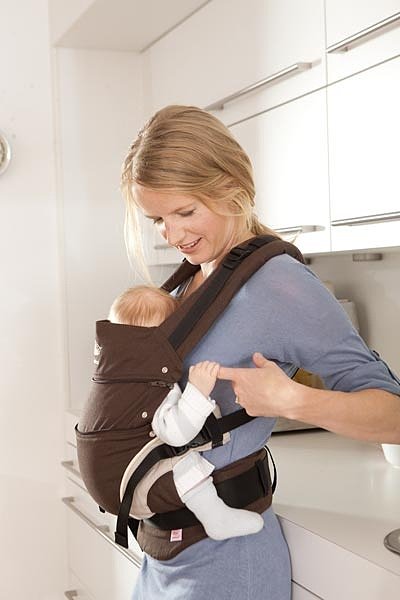
Review of popular models and average prices
When choosing the best accessory, it is important to take into account the brand’s popularity, the number of positive reviews from satisfied customers, and the availability of supporting documentation of compliance with product quality standards.
Several manufacturers with a good reputation:
- Ergo baby (ergo baby) - American-made backpacks, are distinguished by high quality and environmentally friendly materials, increased comfort during operation. Wide parts do not rub or cut into the skin. The presence of a soft headrest protects and fixes the baby's head at the correct angle. Equipped with a special seat belt along the chest line - a convenient solution for frequent and safe attachment of the accessory. The color range consists of universal colors to suit every taste. The cost varies between 4000-11000 rubles.
- I love mum – intended for children from 4 months to 1.5 years. They are distinguished by a variety of bright colors and universal materials, allowing the carrier to be used in both warm and cold seasons. Equipped with an elastic band to secure a newborn, the straps cross on the back, which relieves the load from the back and shoulders of an adult. The manufacturer offers decent quality at optimal prices, the average cost is about 2500-3000 rubles.
- Hipsit – ergonomic carrier with a special seat for children from 18 months. up to 3 years. Supports the function of carrying on the hip, which greatly facilitates movement with children after one year. Equipped with a convenient way to fasten the seat on an adult’s belt, it eliminates the appearance of pain in the lower back. The best option for children who like to sit in their arms. Approximate prices from 1000-3500 rubles.
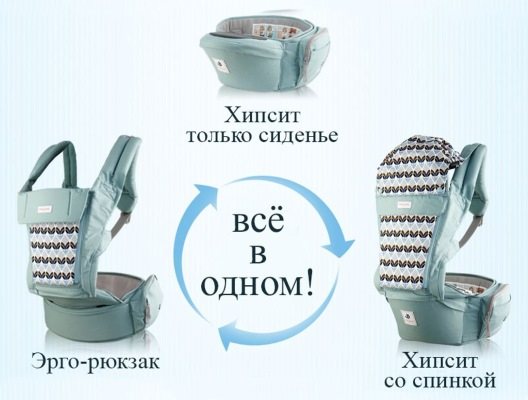
- Berlozhka – a Russian brand, backpack models are represented by high-quality devices at affordable prices. The average cost of carrying is 2500 rubles. The set includes a belt bag, a hood, a backrest with the option of changing the length as the child grows. The model is considered suitable for large children under 3 years of age.
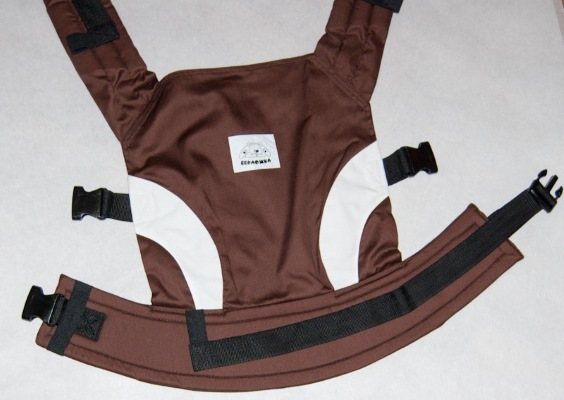
- Sling mi is a practical model made from natural materials with a hood. It is possible to add various useful functions to free your hands from bags and phones. You can order a handmade drawing. Democratic pricing policy, the purchase will cost between 2000-2500 rubles. Restrictions on use – from 4 months. up to 25 kg.
A high-quality ergo-backpack greatly facilitates the leisure time of young parents in the rhythm of modern life. Compliance with all recommendations for its safe use can be not only comfortable, but also beneficial for the development of the newborn.
Article design: Svetlana Ovsyanikova
Insert - solution for newborns
The insert for children up to 1.5 months is usually sold separately from the backpack. It is a soft cradle, which is designed to remove excess space in the backpack and provide the baby with the opportunity to sit in the fetal position. The insert is really convenient, and yet you should not abuse it and carry the baby for a long time in a backpack, because it cannot completely follow the shape of the baby’s back, which means the correct fit is not guaranteed.
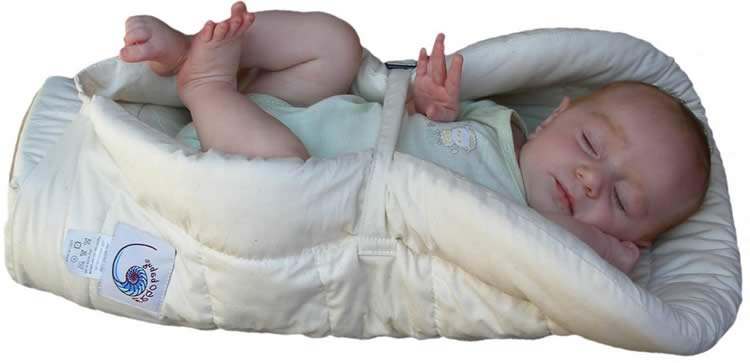
In addition, this insert is quite voluminous and is comparable in thickness to a flannelette blanket, and this is fraught with overheating in the warm season.
